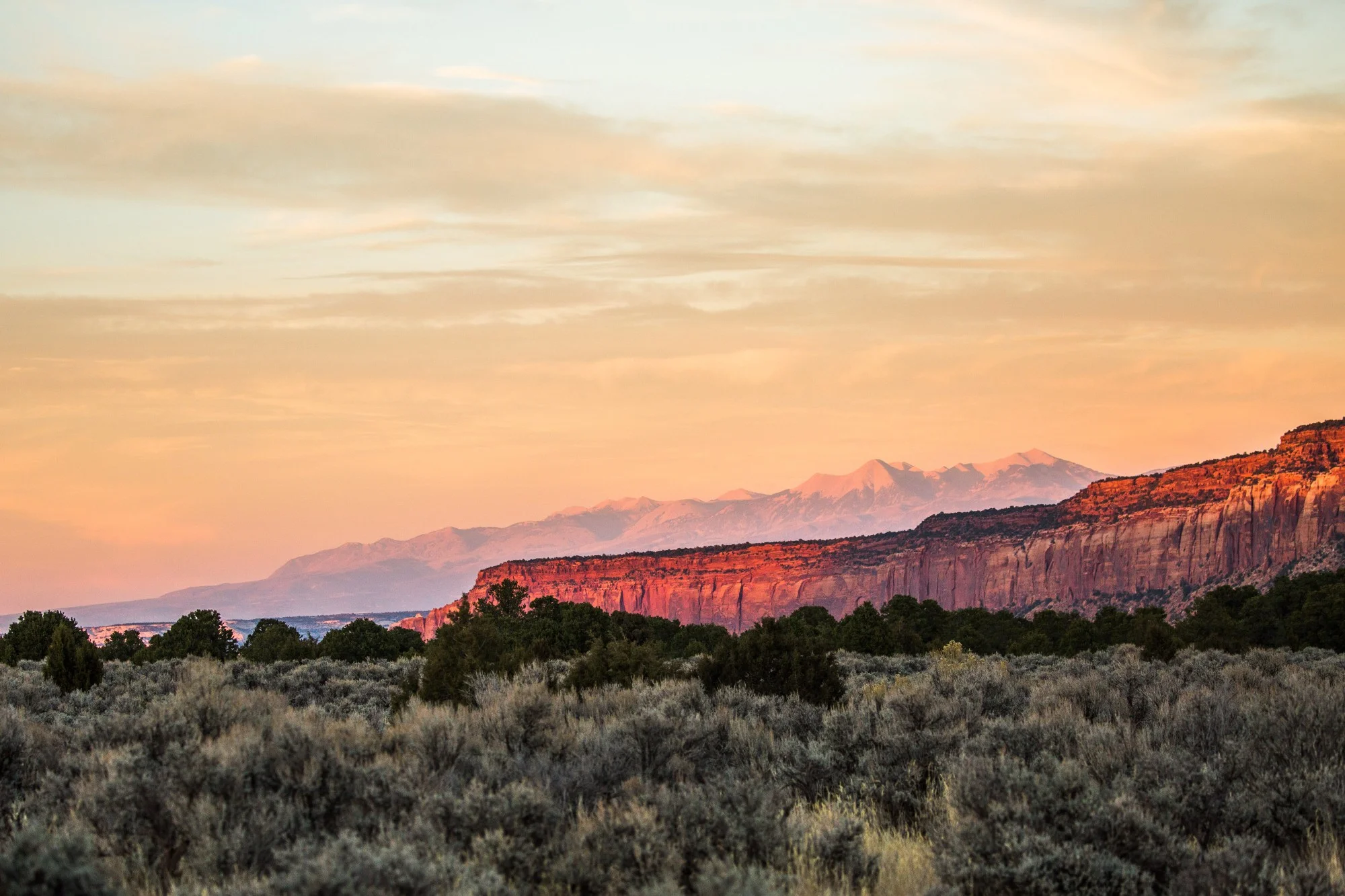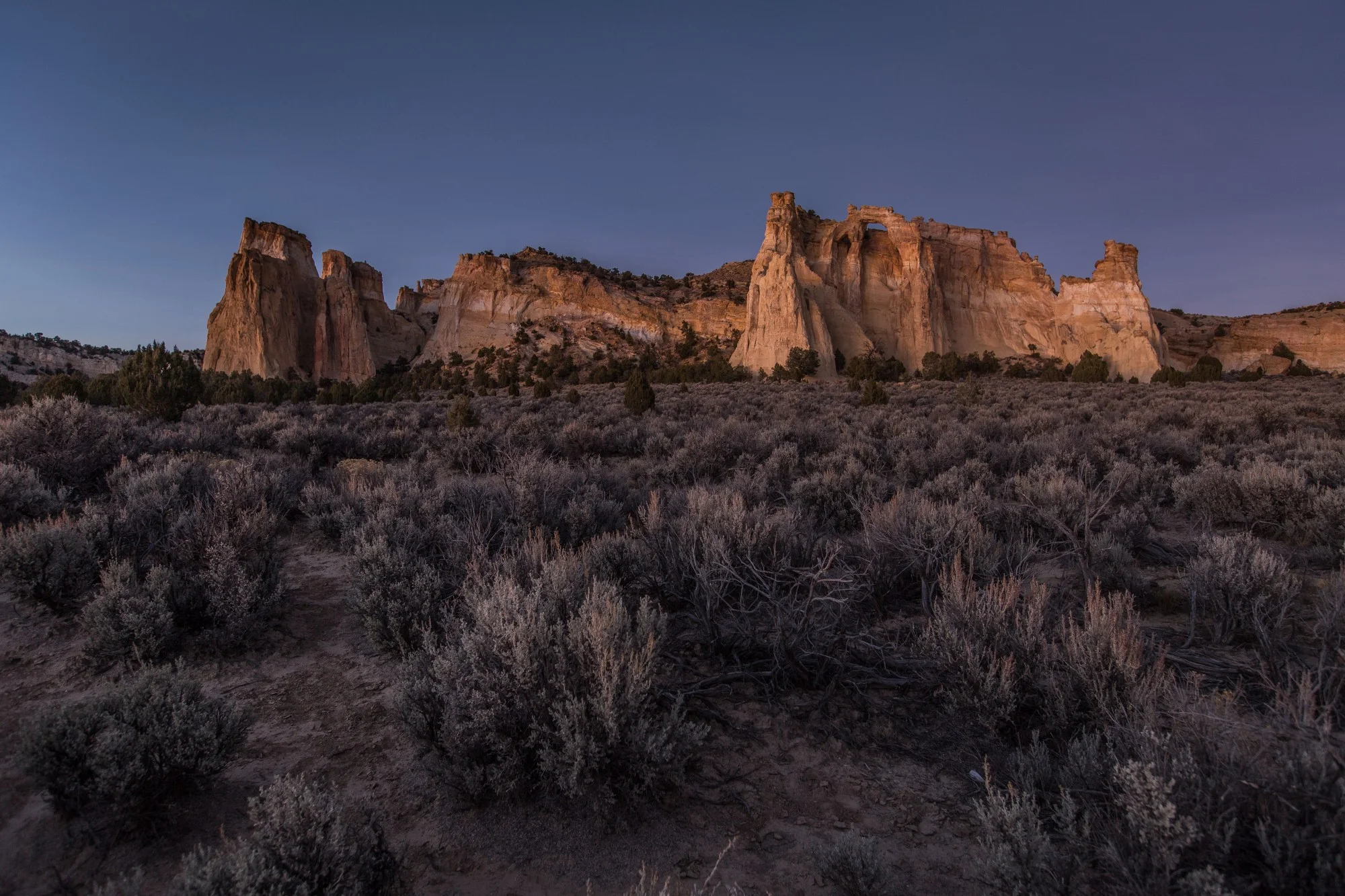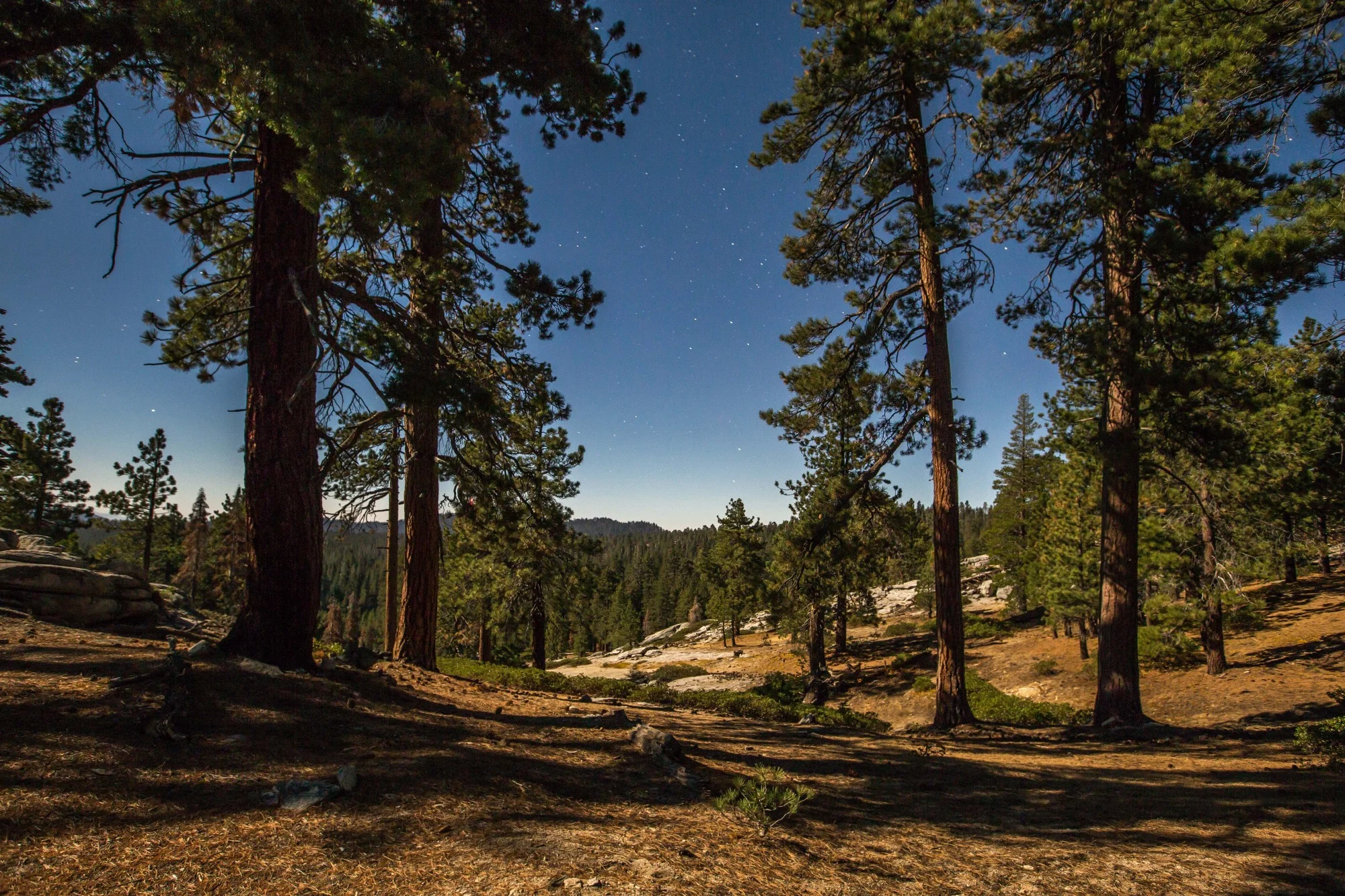CASCADE-SISKIYOU NATIONAL MONUMENT: A Landmark for Biodiversity
Text & Photos: Justin Lotak · 10 min read
Pilot Rock
Along the border of Oregon and California lies a special blend of ecosystems. This is where the Great Basin meets three distinct mountain ranges: the Cascade, the Siskiyou, and the Klamath. These come together in a small region, much of which is now inside the boundaries of the Cascade-Siskiyou National Monument.
Originally designated in 2000 by President Clinton, and then expanded by President Obama in 2017 to reach almost 100,000 acres, this is the first national monument designated because of its biodiversity. And to this date, it is the only national monument to have that claim.
We visited the monument in September of this year, and we had the opportunity to interview Jeanine Moy, Outreach Director with KS Wild – a local NGO that has been working since 1997 to protect biodiversity and watersheds in the region. “Originally [the monument] was smaller than what was recommend, due to political reasons,” Jeanine tells us. Pointing at a map of the monument she adds, “the original boundary is this red line, and then the bright green is the expansion from earlier this year. Because the original designation didn’t include all the proposed areas, there have been several scientific studies that were initiated by local scientists who came together. They've had strategy sessions, looking at how this area is not fully protective of the ecological values. Even when they broke out into different groups they all came back and said these areas are critical for animal migration and for biodiversity preservation at all levels: genetic to population level.”
The biodiversity here is spectacular on all levels. From mammals roaming the forested mountains including northern flying squirrel, river otter, American pika, and the occasional wolf, to rare amphibians in the ponds such as the Oregon spotted frog and the Siskiyou Mountains salamander, to over 200 species of birds including the rare Oregon vesper sparrow and the great gray owl. The vegetation and tree species are especially worth noting, which include Oregon white oak, California black oak, bigleaf maple; and if you’re in the Siskiyou Mountains, according to Jeanine, you can find up to 36 species of conifers, sometimes mixed with deciduous forests and the occasional oak savannah. If one likes to search for butterflies, this is one of the best spots in the United States to see a wide range of them. Jeanine describes to us, “The local interpretive specialist for the monument says the butterfly is to [Cascade-Siskiyou] as the bison is to Yellowstone. There’s upwards of up to 120 species of butterflies, which is closely linked to the floral diversity.”
And new species are continually discovered. “You'll be in the monument hiking along oaks and then you'll see pines, and you'll find sage brush mixed in there, just this kind of botanical conundrums. And since the monument was established there's new species being discovered constantly.” She describes a ‘bio-blitz’ that was performed last year by the Friends of Cascade-Siskiyou, where the participants searched for as many species as they could find in a short period: “In one day last fall we tripled the number of fungi species that are known in the monument. The BLM, the managing agency, had about 45 species on their list and they found over 100 species that one day.”
western fence lizard (Sceloporus occidentalis)
A western fence lizard basking in the afternoon sun. The blood of this species of lizard is special: ticks that bite them get purged of the bacteria that causes Lyme disease in humans as a result of the interaction with a protein in the lizard's blood.
Atlantis fritillary (Speyeria atlantis)
An Atlantis fritillary gathering pollen at Cascade-Siskiyou National Monument
Female Yellow-rumped Warbler (Setophaga coronata)
Asking Jeanine about whether wolves were in the area, she replied: “OR-7 did come through. OR-7 is the first wolf to enter California in almost 100 years, traveling almost 1,200 miles from northeast Oregon. He’s on his third litter of pups this season, and we found out he’s a grandpa. I think it’s a testament to how intact the Cascade north-south corridor is, allowing him to travel along that way. As an individual he is a very special wolf. He resides just north of the monument's boundaries. I don’t know if people know exactly where, because he doesn't have a collar anymore, but he is an exceptional individual. When he had a collar, we knew that he traveled across the Interstate-5 at least three times. Other wolves that have been collared - they've seen them go up to the highway, look at it, and turn around.”
As to the high biodiversity, it largely has to do with the local geology. Jeanine describes it in some detail to us: “This entire region is recognized internationally as a biological hotspot. There is incredibly dissected topography - you see all the river drainages and all the mountains, and that's because of a subduction zone. The oceanic plate is subducting under the continental plate so there's a lot of physical barriers that have evolved in isolation over time. There are incredible weather gradients, so in the high Siskiyous we can get over one hundred inches of rain a year, and then down around the Rogue Valley, we get about twenty-five inches of rain. So there's just so much variation in all sorts of ways. There's also really unique soils, Serpentine soils, that are uplifted ocean floor bottom, which influence the soils especially in the Siskiyous coming up. There are tons of endemic plants that grow nowhere else in the world in the Siskiyous. Then you have a very different mountain range going north-south [the Cascades]. These are volcanic, they are much younger, there are very rich soils, and a lot of conifers. And so we have those two different mountain range influences, then we have the Rogue Valley basin with the oak savannah, and we have influence from the Great Basin as well.”
Each national monument has its own presidential proclamation, but this one has two, due to its designation and expansion under two different presidents. The proclamation for each national monument is a great summary for the reasons why each of these places are so important for conservation. Excerpts from the two proclamations include:
“With towering fir forests, sunlit oak groves, wildflower-strewn meadows, and steep canyons, the Cascade-Siskiyou National Monument is an ecological wonder, with biological diversity unmatched in the Cascade Range. This rich enclave of natural resources is a biological crossroads - the interface of the Cascade, Klamath, and Siskiyou ecoregions, in an area of unique geology, biology, climate, and topography.”
– William J. Clinton, Presidential Proclamation for Cascade-Siskiyou National Monument; June 9, 2000
“The incredible biodiversity of plant communities in the expansion is mirrored by equally stunning animal diversity, supported by the wide variety of intact habitats and undisturbed corridors allowing animal migration and movement. Perhaps most notably, the Cascade-Siskiyou landscape, including the Upper Jenny Creek Watershed and the Southern Cascades, provides vitally important habitat connectivity for the threatened northern spotted owl. Other raptors, including the bald eagle, golden eagle, white-tailed kite, peregrine falcon, merlin, great gray owl, sharp-shinned hawk, Cooper's hawk, osprey, American kestrel, northern goshawk, flammulated owl, and prairie falcon, soar above the meadows, mountains, and forests as they seek their prey.”
– Barack Obama, Presidential Proclamation for the Boundary Enlargement of the Cascade-Siskiyou National Monument; January 12, 2017
California's Mt. Shasta can be seen from various peaks within Cascade-Siskiyou National Monument, despite the smoky haze from nearby forest fires.
In April of this year, an executive order was put in place by the presidential administration requesting the Secretary of the Interior to review all national monuments designated since 1996 that were over 100,000 acres in size, to determine whether presidents overused the Antiquities Act to create national monuments. It is important to note that national monuments are usually signed by presidents after years, if not decades, of work by local residents and organizations, with considerable input via local stakeholder meetings and comment periods. It is also important to note that national monuments are designated on public federal lands. They are not “federal land grabs”. Their borders may encompass private or state lands, but the land ownership does not change; rather, a management plan gets worked out over several years for how the federal lands within the monument should be managed going forward.
As part of the executive review, comments from the public were requested, and a total of over 2.8 million comments from individuals and organizations were received pertaining to national monuments. Although an estimated 99.2% of the public comments received were in favor of keeping all monuments as they are currently designated, including 87% of the comments specifically for Cascade-Siskiyou, it is important to look at the reasons why this monument has opposition. As we learned during our visit and during further research into the monument, the main opposition derives from two reasons: timber operations and off-road vehicle use. As stated in the monument’s management plan, timber harvesting would no longer be permitted within the monument, unless it benefited the restoration of the ecosystem or could be done to improve fire resiliency; and off-road vehicles must stay on designated open roads. The reasons for these limitations is so that the objects of scientific interest – the biodiversity in this case – could be restored and protected. Contrary to what some opposition signs posted in and around the monument might have one believe, the monument is not an example of big government closing off access to the public. The monument was declared to protect the ecosystems of the region, and low impact recreational use of the land is still open to the public, including hiking, camping, mountain biking, rock climbing, hunting, and fishing. And the Pacific Crest Trail (PCT) passes right through the monument, offering thru-hikers a pristine welcome into Oregon or California, depending on which direction they’re hiking.
Decades of fire suppression along with warming temperatures have led to a rise in "megafires", defined as forest fires that are larger than 100,000 acres according to the National Interagency Fire Center. Smoke from fires further west blotted out the sun on some days during our visit.
Hiking along a section of the PCT with Jeanine Moy from KS Wild
As is the case with most conversations regarding what to do with public lands and national monuments, the economic impact of the monument gets added into the discussion. Proponents for timber harvesting will often point to the jobs and local tax revenue that can be gained from cutting the trees, but as we’re learning, the potential economic impact of keeping monuments conserved can be a bigger economic boom to regions over the long run. The outdoor recreation industry is beginning to show its economic muscle, with an estimated $887 billion dollars spent by consumers in 2016 in the United States alone. But the regional economic impacts are not immediate; it takes time for people to hear about their recently-protected public lands. The Grand Canyon was originally protected (despite intense opposition) by Teddy Roosevelt as an 800,000-acre national monument in 1908. After 11 years, it was designated a national park by congress, and now it’s hard to imagine the Grand Canyon not being the protected and iconic landscape that it almost wasn’t. Sure, there are jobs that go away when forestry, mining, or oil & gas drilling become prohibited on a piece of public land, but data is showing that the economy does not dwindle into a nothingness as opponents to monuments might want us to believe. Local towns and nearby gateway communities gain new types of jobs, ones that have to do with tourism and outdoor recreation. And if the conservation area is managed right – in the case of Cascade-Siskiyou National Monument, that would mean healthy ecosystems and thriving wildlife – local regions can greatly benefit over the long run: jobs can be created, youth will have incentives to stick around or move to the area, and a healthier environment can provide healthy recreational opportunities for those that reside in the nearby communities.

















To date, President Joe Biden has designated five national monuments since coming to office in 2021. Here we take a look at four of those five national monuments that had a land conservation element, and what might be on the slate before the end of his first term.